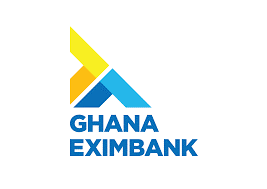Digital Currencies and Central Bank Digital Currencies (CBDCs) Training Course
INTRODUCTION
Digital currencies are reshaping the global financial landscape, with innovations ranging from cryptocurrencies to Central Bank Digital Currencies (CBDCs). As economies become more digitalized, central banks and governments are exploring the potential benefits and risks of CBDCs for payment systems, monetary policy, financial stability, and financial inclusion.
This 10-day course is designed to provide participants with a comprehensive understanding of digital currencies, focusing specifically on CBDCs. It covers the fundamentals of digital currency technologies, the rationale behind CBDC development, the policy and regulatory challenges, and the practical considerations for designing and implementing CBDCs. The course also examines the impact of CBDCs on traditional banking, financial systems, and monetary sovereignty, offering valuable insights into the future of money in an increasingly digital world.
DURATION
10 days
TARGET AUDIENCE
- Central bank officials
- Financial regulators and supervisors
- Policymakers and government officials in finance ministries
- Bankers, financial institutions, and fintech professionals
- Economists and researchers interested in digital finance
COURSE OBJECTIVES
By the end of this course, participants will:
- Understand the fundamentals of digital currencies:
- Gain a deep understanding of cryptocurrencies, stablecoins, and the technologies that underpin them (blockchain, distributed ledger technologies).
- Learn about the evolution of money and the transition to digital currencies.
- Explore the role and potential benefits of Central Bank Digital Currencies (CBDCs):
- Analyze the motivations for central banks to issue CBDCs, including financial inclusion, payment system efficiency, and monetary policy control.
- Understand how CBDCs differ from other forms of digital money (e.g., private cryptocurrencies and stablecoins).
- Assess the potential challenges and risks of CBDCs:
- Identify key risks related to financial stability, cyber threats, and regulatory concerns.
- Understand how CBDCs could impact traditional banking systems and monetary policy.
- Examine international experiences and case studies:
- Study case examples of CBDC development and implementation from pioneering countries (e.g., China, Sweden, the Bahamas).
- Learn about international collaborations and frameworks guiding CBDC development.
- Design frameworks for CBDC implementation:
- Explore the design choices for CBDCs (retail vs. wholesale CBDCs, account-based vs. token-based systems).
- Understand the legal, technological, and operational requirements for implementing CBDCs.
- Analyze the role of public-private partnerships in digital currency ecosystems.
- Develop strategies for regulatory and policy frameworks:
- Examine the regulatory considerations for CBDCs and digital currencies, including anti-money laundering (AML) and combating the financing of terrorism (CFT).
- Explore how central banks can effectively regulate digital currency markets.
COURSE CONTENT
Module 1: Introduction to Digital Currencies
- Definition and types of digital currencies (cryptocurrencies, stablecoins, digital fiat)
- The role of blockchain and distributed ledger technology (DLT)
- The evolution of digital payments and the rise of decentralized finance (DeFi)
Module 2: Understanding Central Bank Digital Currencies (CBDCs)
- What is a CBDC? Key characteristics and types (retail vs. wholesale)
- Differences between CBDCs, stablecoins, and private cryptocurrencies
- The potential benefits of CBDCs for financial inclusion, monetary policy, and payment systems
Module 3: Motivations for Issuing CBDCs
- The role of CBDCs in improving payment systems efficiency and security
- CBDCs as a tool for enhancing financial inclusion
- Monetary policy implications: interest rates, liquidity management, and inflation control
- Enhancing sovereignty over national payment systems in the face of private digital currencies
Module 4: Challenges and Risks of CBDCs
- Impact on the traditional banking system: disintermediation risks
- Financial stability concerns and strategies to mitigate risks
- Cybersecurity risks and digital resilience in CBDC systems
- Legal, privacy, and data protection challenges
Module 5: Designing CBDCs: Key Considerations
- Retail vs. wholesale CBDCs: use cases and implications
- Account-based vs. token-based CBDCs: advantages and challenges
- Design features: anonymity, traceability, offline capabilities
- Cross-border CBDCs and interoperability issues
Module 6: Regulatory and Policy Frameworks for Digital Currencies
- Regulatory considerations for CBDCs: AML/CFT frameworks
- Cross-border regulatory challenges and coordination
- Central bank oversight of digital currency markets
- Consumer protection and data privacy concerns in digital currencies
Module 7: International Case Studies and Experiences with CBDCs
- Case studies: China’s Digital Yuan, Sweden’s e-Krona, the Bahamas’ Sand Dollar
- Lessons learned from pilot programs and early CBDC adopters
- International collaboration on CBDCs: BIS, IMF, and other global initiatives
Module 8: Technological Infrastructure and Operational Aspects of CBDCs
- Technology platforms for CBDCs: blockchain vs. traditional systems
- Digital identity, authentication, and access management in CBDC systems
- Developing the infrastructure for CBDCs: payment systems, wallets, and security
- Role of fintech companies and partnerships in CBDC ecosystems
Module 9: Financial Stability and CBDCs: Mitigating Risks
- Assessing the potential impact of CBDCs on financial intermediaries and markets
- Policy tools to manage liquidity risks and mitigate systemic risk
- Coordination with fiscal authorities to manage public perception and trust in CBDCs
- Developing contingency plans for system failures or security breaches
Module 10: Future Trends and Innovations in Digital Currencies
- The evolving role of central banks in digital economies
- Emerging technologies in digital currencies: programmable money and smart contracts
- The future of cross-border payments and the potential for global CBDC networks
- Geopolitical considerations and the competition between public and private digital currencies
CERTIFICATION
- Upon successful completion of this training, participants will be issued with Macskills Training and Development Institute Certificate
TRAINING VENUE
- Training will be held at Macskills Training Centre. We also tailor make the training upon request at different locations across the world.
AIRPORT PICK UP AND ACCOMMODATION
- Airport pick up and accommodation is arranged upon request
TERMS OF PAYMENT
- Payment should be made to Macskills Development Institute bank account before the start of the training and receipts sent to info@macskillsdevelopment.com
Digital Currencies And Central Bank Digital Currencies (cbdcs) Training Course in Kenya
| Dates | Fees | Location | Action |
|---|---|---|---|
| 13/10/2025 - 24/10/2025 | $2,950 | Mombasa |
|
| 20/10/2025 - 31/10/2025 | $2,450 | Nairobi |
|
| 03/11/2025 - 14/11/2025 | $4,950 | Johannesburg |
|
| 10/11/2025 - 21/11/2025 | $3,950 | Kigali |
|
| 17/11/2025 - 28/11/2025 | $2,450 | Nairobi |
|
| 01/12/2025 - 12/12/2025 | $3,950 | Kigali |
|
| 08/12/2025 - 19/12/2025 | $2,450 | Nairobi |
|





















